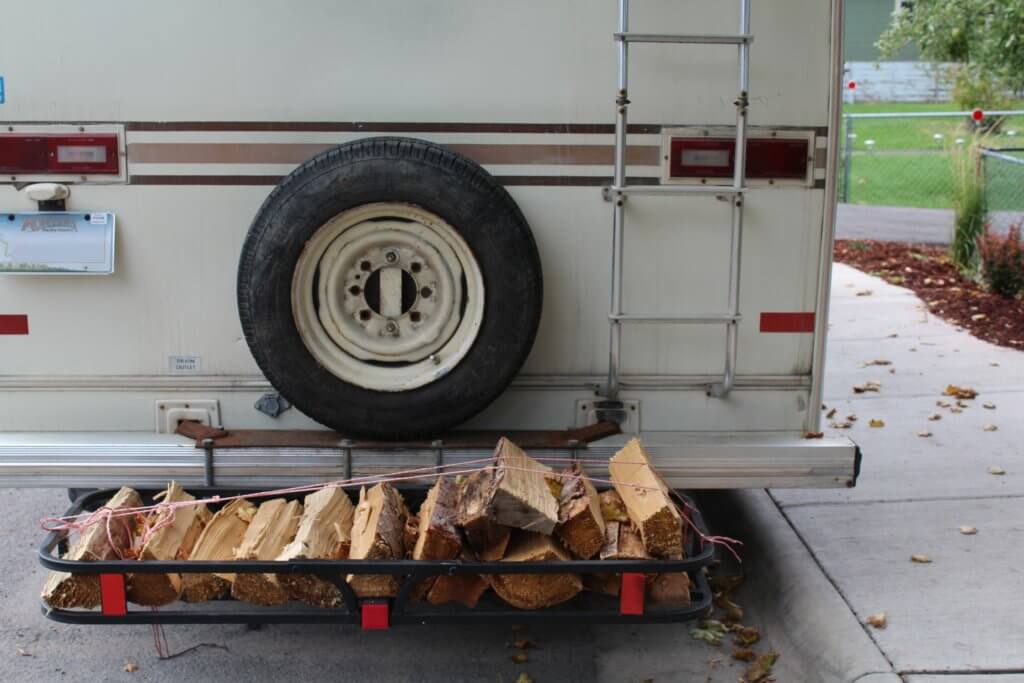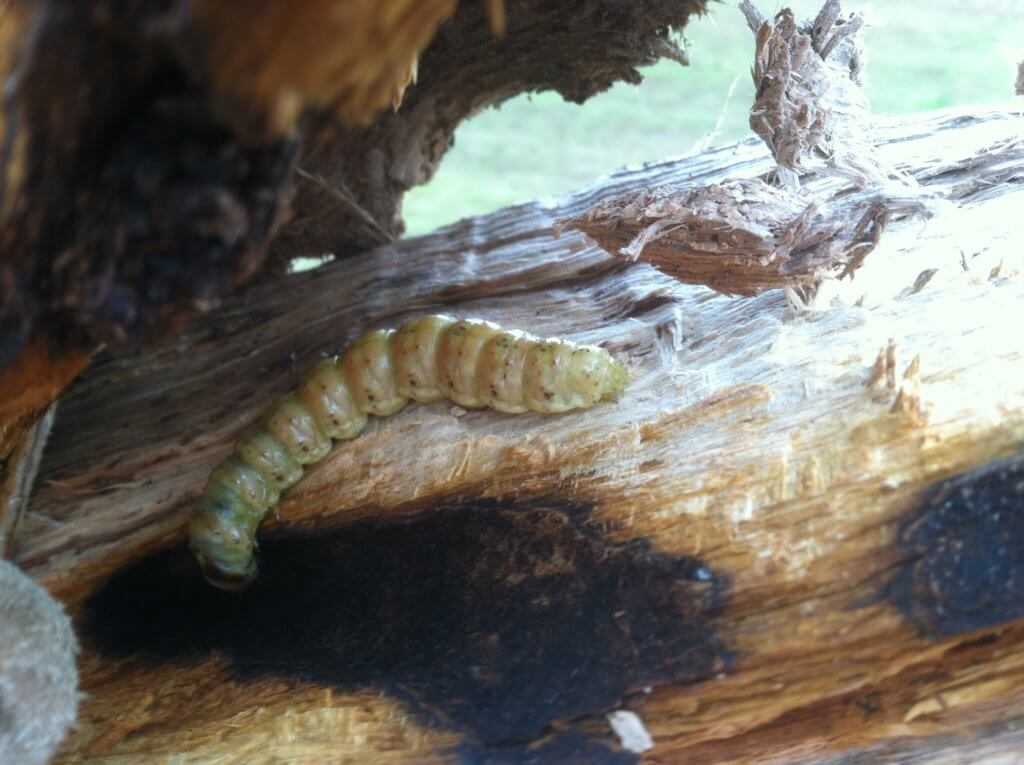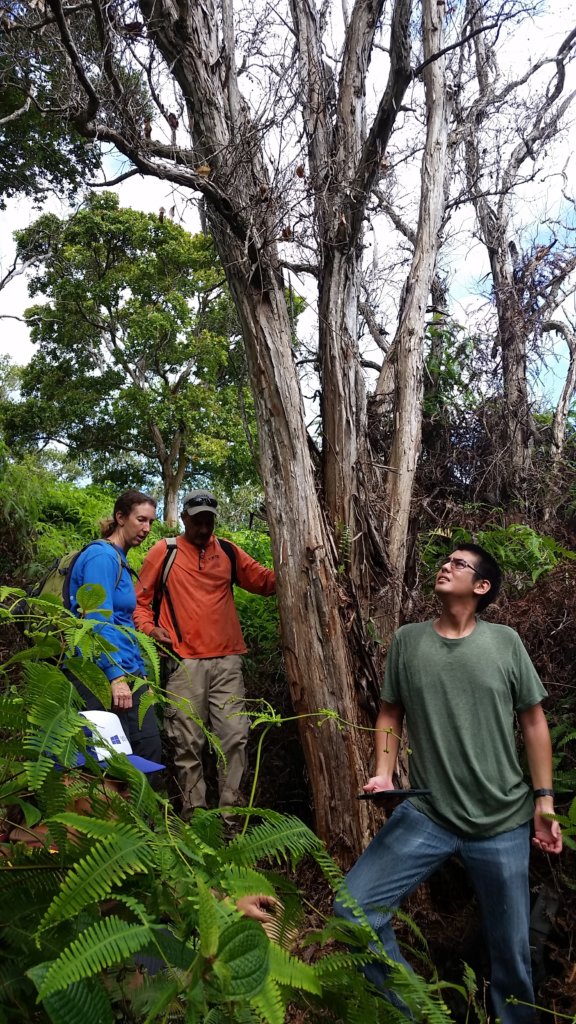Guest blog by David Coyle, Assistant Professor in the Department of Forestry and Environmental Conservation, Clemson University
Most insects (and fungi) don’t really move that far on their own. The emerald ash borer, widely considered the worst invasive forest insect of our generation, flies at most a few miles a year. So if that’s the case, then how did it get from Detroit to Texas (or Maine, or Manitoba, or Georgia, or North Carolina, or…) in less than two decades? I’ll tell you how – it got accidentally moved around by people, most likely in infested wood products. And what’s one of the most commonly moved wood products that people like to move around? Firewood.
Maybe it’s for a relaxing weekend camping at a park (“I’m gonna sit by the fire and enjoy doing nothing”), maybe it’s for a gathering at a relative’s house (“Let’s have a bonfire!”), or maybe it’s for cold fall nights out deer hunting- whatever the reason, firewood gets moved around all the time. When it is only short distances, that’s not a big problem- but unfortunately, the transportation of firewood is one of the main ways invasive pests get moved longer distances, like to new states or regions far away from their original infestation.

Now you may be asking yourself – why do people move firewood considering all the information about the risk of moving forest insects? What’s the precise reason people choose to move firewood? Do they not know it’s bad? Or do they not care? Or is it something else?
Recently, researchers from the University of Maine, Unity College, and the USDA Forest Service interviewed campers (272, to be exact) at campgrounds in Maine, New Hampshire, and Vermont, all with the goal of figuring out the answer to these questions. You can read the whole study at (https://academic.oup.com/forestscience/advance-article/doi/10.1093/forsci/fxy056/5232804), but for a quick summary, keep reading!
First, the good news: most people (92%!) did know about invasive forest pests (though they couldn’t always name one) and the majority (72% of campers) did not bring firewood from home. The bad news is that we now know 28% of people are bringing firewood from home. The big reasons why people brought their own wood probably won’t surprise you –they already had it available at home, and bringing it is cheaper than buying it.
The study also found out that the less people cared about (or were “involved with”) invasive forest pests, the less they thought invasive forest pests were a problem. This makes perfect sense. Think of something you care deeply about – you probably think it’s important, right? We are all more motivated to protect the things we care about and understand, than the things that don’t seem important, or that we simply are not aware of.
This important research shows us that we still have work to do in the world of forest pest, firewood, and social science research. We need to figure out new, exciting ways to convey to people how bad invasive species can be, and how their actions make a difference. Maybe we need to show more images of large-scale devastation from insect outbreaks? Maybe it’s personal stories of financial loss – or the loss of a beautiful tree in someone’s yard? Whatever it is, reaching those folks who don’t yet care or understand will be critical to protecting our trees and forests.
Like me, you may have heard misconceptions about the importance of not moving firewood before, “Who cares? It won’t matter. We’ll burn it all up anyway. There’s no way anything is still living in there. There weren’t any bugs in it to start with. I’m only one person, how much can that really matter?”
As a community of outreach professionals, we need to communicate that yes- your firewood does matter, and one person can make a difference. Every camping trip, hunting trip, or visit to Grandma’s house is another opportunity to do the right thing.
Daigle, J.J., C.L. Straub, J.E. Leahy, S.M. De Urioste-Stone, D.J. Ranco, and N.W. Siegert. 201x. How campers’ beliefs about forest pests affect firewood transport behavior: an application of involvement theory. Forest Science XX: 1-10.
Photo credit: L. Greenwood, The Nature Conservancy






